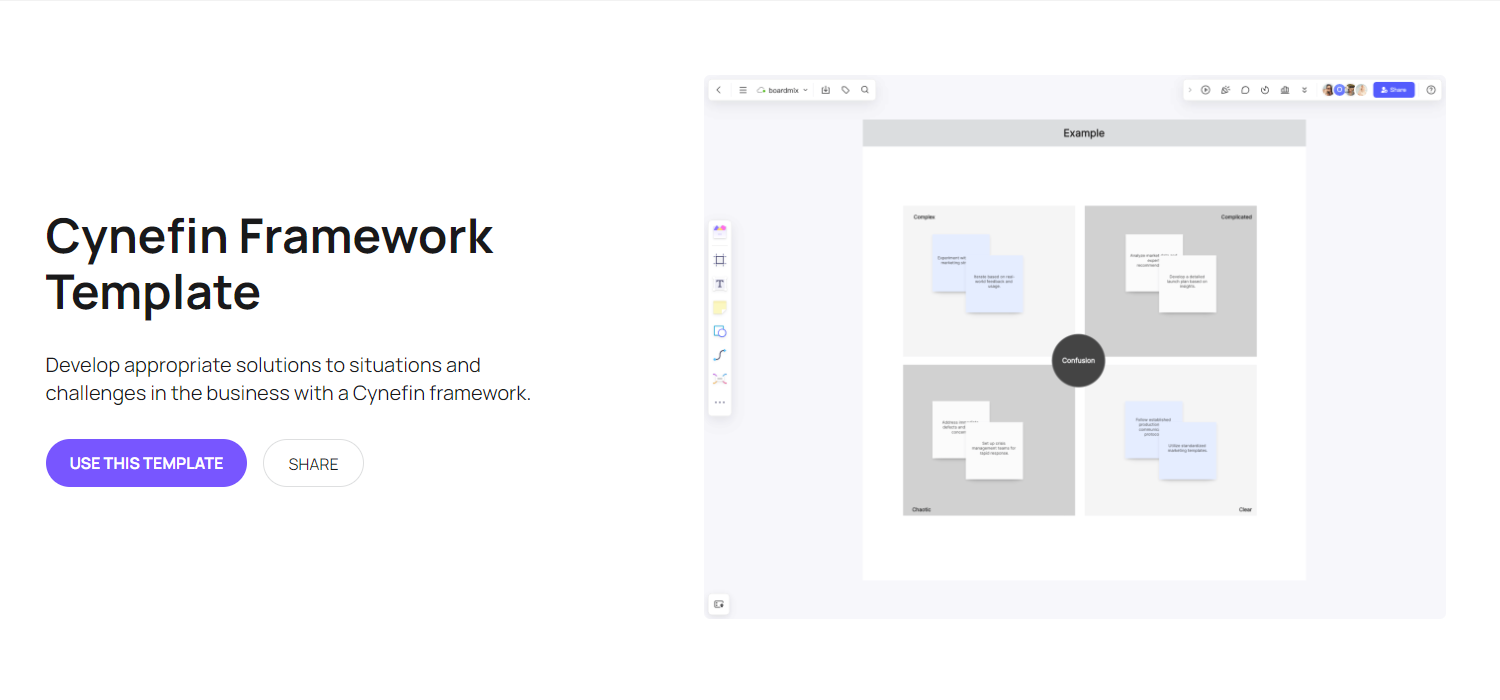There is no denying that problem-solving is one of the most challenging parts for every team or entrepreneur. However, leveraging the potential of the Cynefin framework gives you a significant advantage. The Cynefin framework is a technique that conceptualizes a situation and allows you to view it from different perspectives. This way, creating Cynefin frameworks permits you to define the best response for that particular situation.
In this article, we are going to give you several Cynefin framework examples that will help you understand this conceptual framework. Let’s get started.
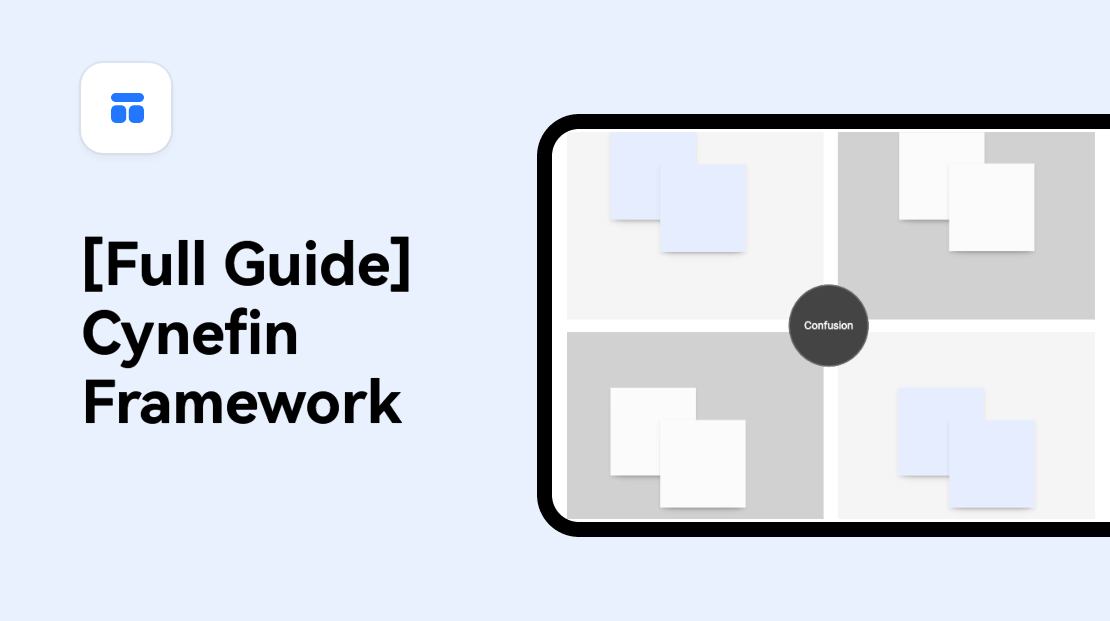
What Are the 5 Domains of Cynefin Framework
Just a glance at the Cynefin framework examples below shows you that this diagram consists of 5 different domains. These plains are at the heart of this framework as they categorize the situation at hand, thus providing you with an idea of how to deal with it.
Here is a brief explanation of all 5 domains in the Cynefin framework examples:
- Obvious Domain: the obvious or clear domain includes situations that your team has faced before and they know exactly what to do.
- Complicated Domain: this section includes situations where some of the variables are known and your team has the relevant skills that will allow them to find a solution.
- Complex Domain: this is a situation with many unknown factors that make its outcome unpredictable. A situation that falls into that category requires experimentation to find the right solution.
- Chaotic Domain: a situation in the chaotic domain often indicates a crisis that requires an immediate response.
- Disorder: when your team doesn’t have an idea of the situation’s nature, then it falls under the disorder domain.
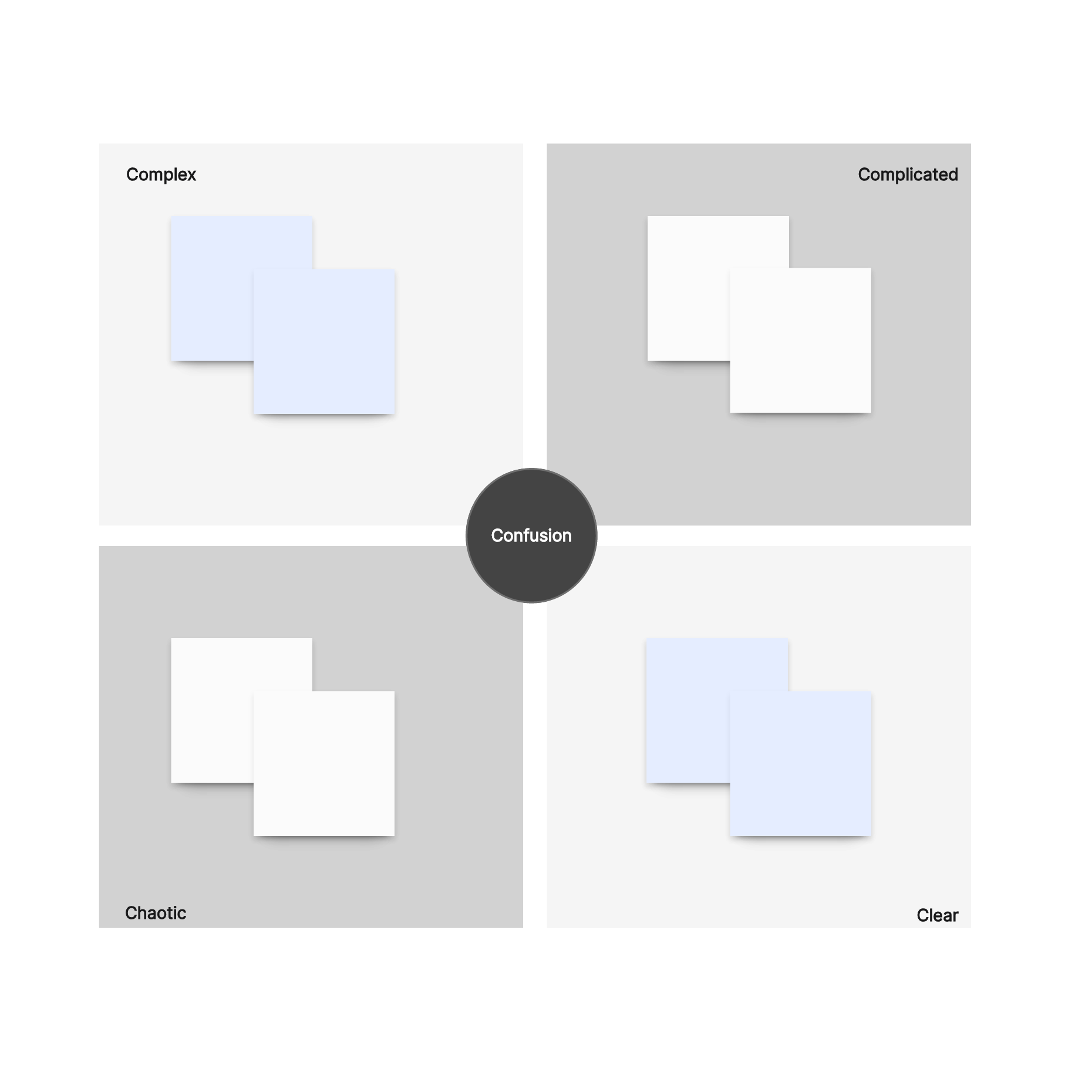
What Is the Cynefin Framework Used for
Understanding the 5 domains of the Cynefin framework is an essential step toward utilizing this technique. But you might be wondering when it is the right time to use it. In reality, the Cynefin framework is a tool that you can use when you want to evaluate a situation to find the best approach for its solution. Therefore, this technique is equally used for problem-solving and decision-making.
5 Cynefin Framework Examples
Cynefin Framework Example – 01
The first of the Cynefin framework examples that we are going to explain is in the context of product development. Here, you will see different situations for the different domains. This particular example is the following:

- Obvious Domain: Design a simple mobile app with a user-friendly UI and all the standard features.
- Complicated Domain: Design a complex system with a set of advanced features that require thorough planning and expertise from a skilled development team.
- Complex Domain: Create an innovative AI-powered online app, where there is a need for constant experimentation and feedback from beta testers from the early stages of development.
- Chaotic Domain: Deal with a sudden critical security flaw in the product that has exposed the users’ sensitive data.
- Disorder: Evaluate and handle conflicting user requirements, as well as internal disagreements in the development team, concerning the product’s features.
Cynefin Framework Example – 02
Taking our Cynefin framework examples into another area, we will examine how this framework will look in the hands of a marketing team. In this instance, all domains deal with situations that arise when the team is trying to market a new product. The example will look like this:
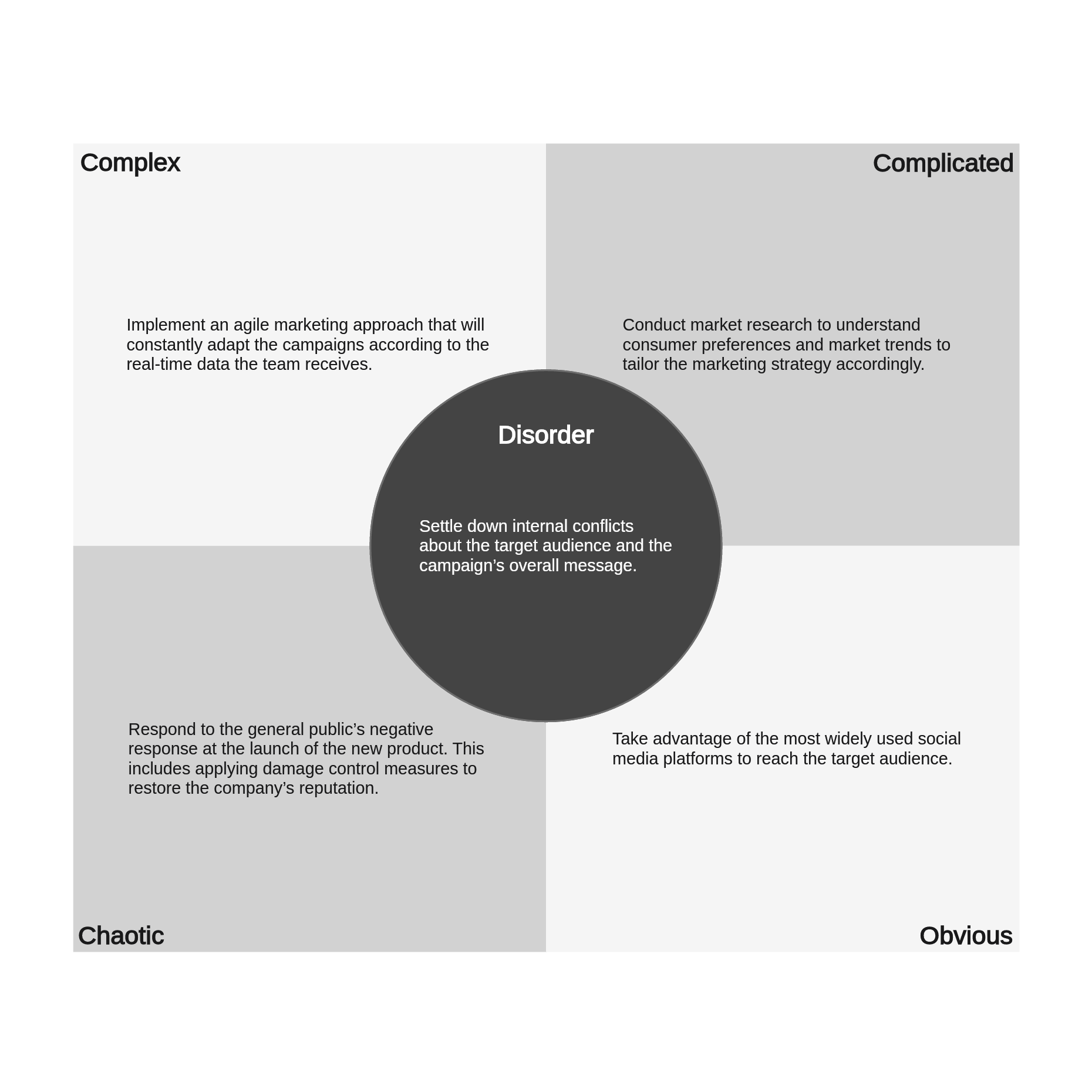
- Obvious Domain: Take advantage of the most widely used social media platforms to reach the target audience.
- Complicated Domain: Conduct market research to understand consumer preferences and market trends to tailor the marketing strategy accordingly.
- Complex Domain: Implement an agile marketing approach that will constantly adapt the campaigns according to the real-time data the team receives.
- Chaotic Domain: Respond to the general public’s negative response at the launch of the new product. This includes applying damage control measures to restore the company’s reputation.
- Disorder: Settle down internal conflicts about the target audience and the campaign’s overall message.
Cynefin Framework Example – 03
Some of the most interesting Cynefin framework examples you are going to encounter are the ones created by the managerial staff. In this instance, we are examining how a manager trying to handle internal conflicts with this tool:

- Obvious Domain: Resolve a minor scheduling conflict between team members by distributing tasks between them.
- Complicated Domain: Handle a disagreement about project priorities. This can happen by consulting previous successful project plans and asking the advice of other team leaders.
- Complex Domain: Handle a shift in organizational culture by experimenting with new communication and team-building strategies that will boost collaboration.
- Chaotic Domain: Deal with a sudden leadership crisis due to unexpected resignations, which includes the appointment of interim leaders.
- Disorder: Manage the conflicting perspectives that extend to a deeper, strategic level.
Cynefin Framework Example – 04
Nevertheless, the Cynefin framework examples don’t only apply to the corporate setting but can also be created for retail stores. In this case, we are creating an example for a fast-food restaurant:
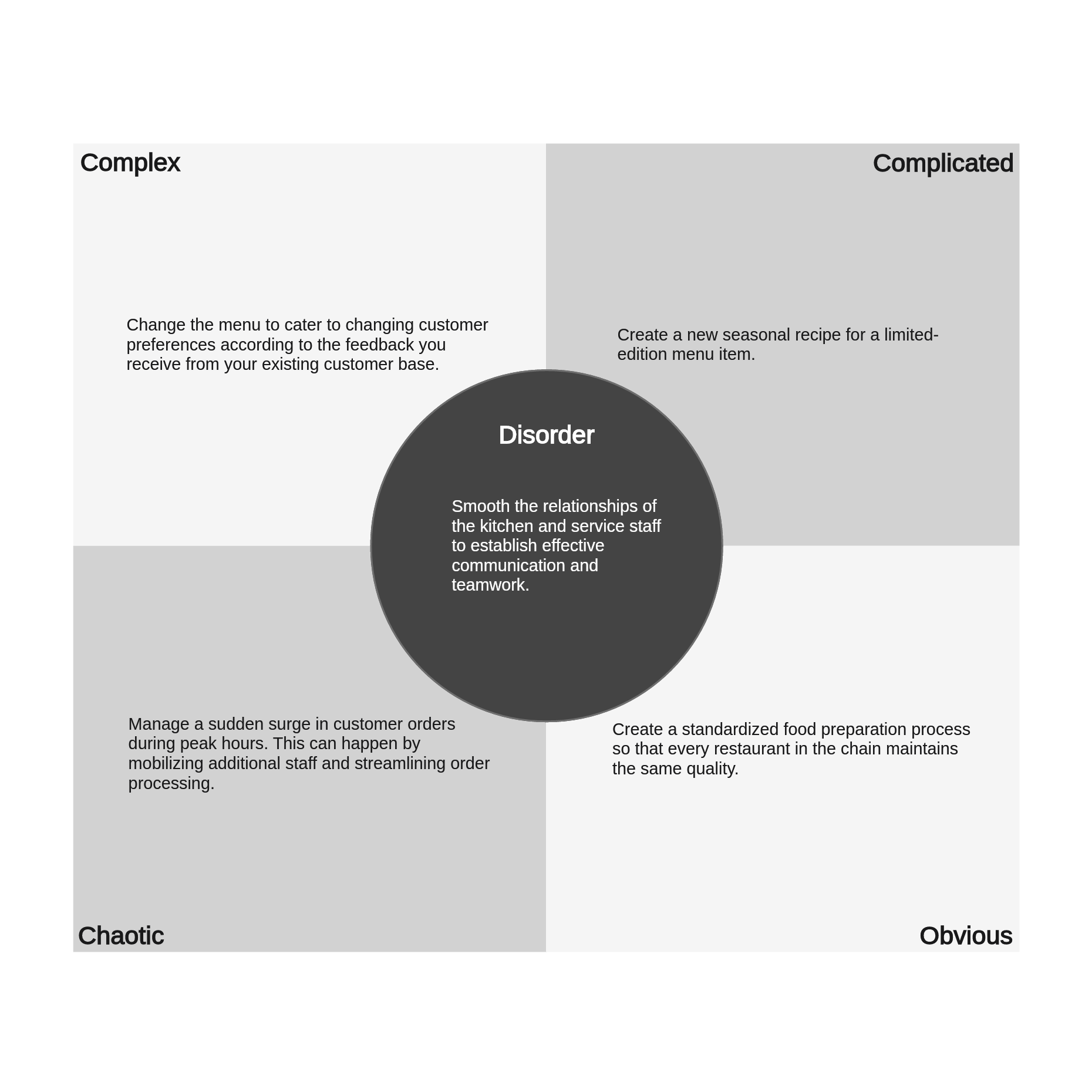
- Obvious Domain: Create a standardized food preparation process so that every restaurant in the chain maintains the same quality.
- Complicated Domain: Create a new seasonal recipe for a limited-edition menu item.
- Complex Domain: Change the menu to cater to changing customer preferences according to the feedback you receive from your existing customer base.
- Chaotic Domain: Manage a sudden surge in customer orders during peak hours. This can happen by mobilizing additional staff and streamlining order processing.
- Disorder: Smooth the relationships of the kitchen and service staff to establish effective communication and teamwork.
Cynefin Framework Example – 05
The final one of our Cynefin framework examples concerns a software development team that is trying to fix a bug on an existing app. In this case, the example will be this way:
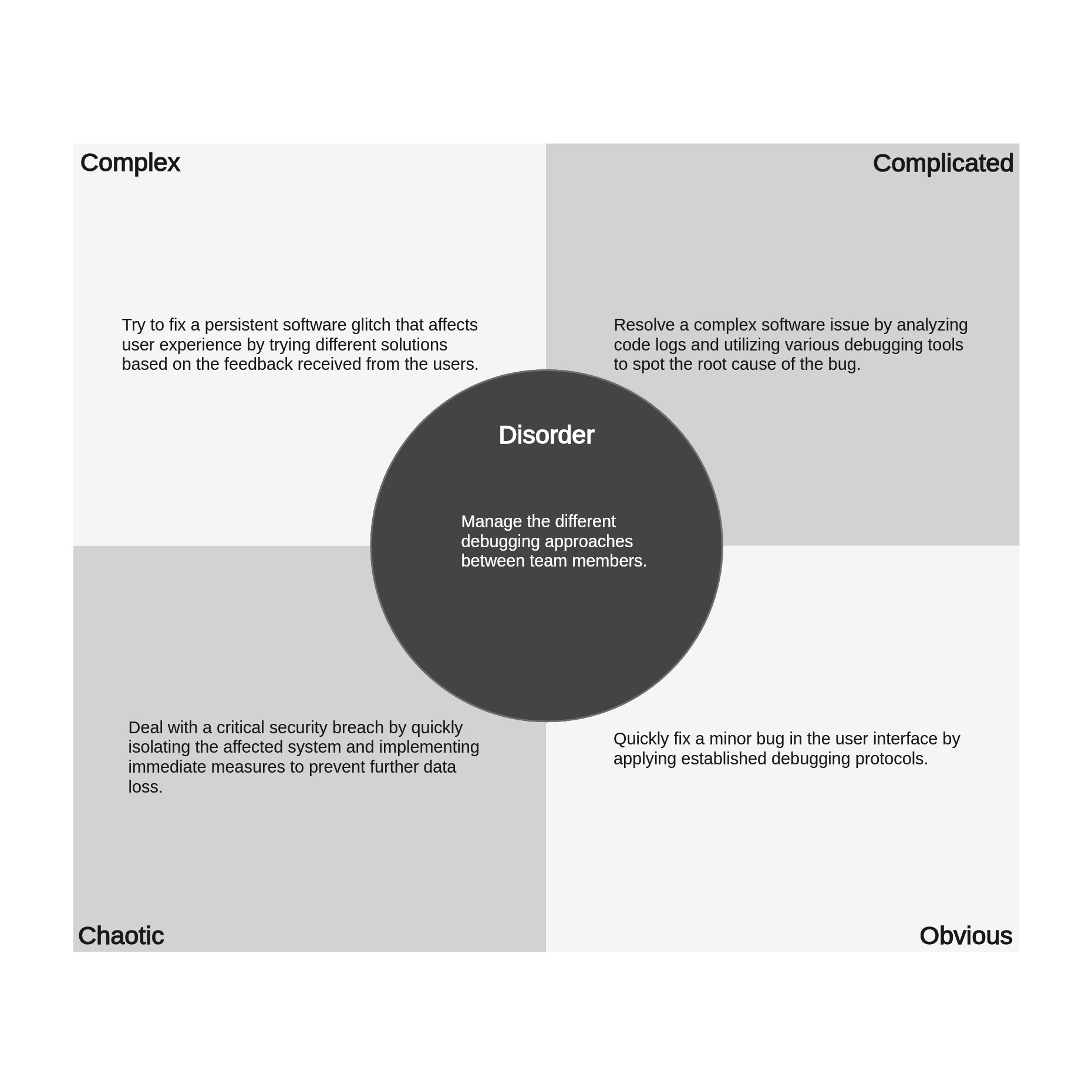
- Obvious Domain: Quickly fix a minor bug in the user interface by applying established debugging protocols.
- Complicated Domain: Resolve a complex software issue by analyzing code logs and utilizing various debugging tools to spot the root cause of the bug.
- Complex Domain: Try to fix a persistent software glitch that affects user experience by trying different solutions based on the feedback received from the users.
- Chaotic Domain: Deal with a critical security breach by quickly isolating the affected system and implementing immediate measures to prevent further data loss.
- Disorder: Manage the different debugging approaches between team members.
Cynefin Framework Template & Tool
All of these Cynefin framework examples show you how to use this framework in various cases. The easiest way to start implementing this methodology is to create an account on Boardmix. This online collaborative tool brings you the ready-made Cynefin framework template. This way, you won’t need to spend any time designing the diagram. Instead, you can focus on actually finding the right solution for the situation you are facing. Create your Boardmix account for free to gain access to this efficient Cynefin framework template right now!
